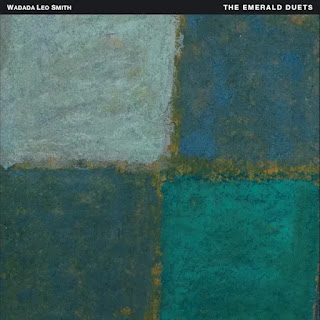Like most musicians in 2020, Reed Mathis found himself with time on his hands being that all of his tours and session work had been cancelled for the foreseeable future. Never one to idle, Reed turned attention to his archives, dusting off countless hours of audio from Jacob Fred Jazz Odyssey, the Tulsa, OK-based band that he helped found and performed with for nearly 15 years. First and foremost among his discoveries was 'Winterwood'—Mathis' final studio recording with JFJO. The album was never officially released seeing as he departed the band shortly after its completion in 2008. And so the downtime gave Mathis the impetus to remix the sessions, which had been lying dormant for 12 years. In addition, Reed combed through countless hours of JFJO live recordings, compiling four new live albums from what many fans consider the band's golden years: 2005-2008. Once completed, Mathis would enlist his friends at record label, Royal Potato Family, to help release this treasure trove of vintage JFJO.
To commemorate the release of 'Winterwood' and the four live albums, Reed Mathis created a homespun documentary short film with archival photos, band posters, original cover art and much more to explain the origins and evolution of Jacob Fred Jazz Odyssey. The video traces the band’s origins back to Tulsa, OK in 1994 when many of the members were still only teenagers to the late '90s and early aughts. At the time, the musicians were literally living in a van and performing up to 300 shows a year. Mathis' narration explains that during JFJO's myriad metamorphoses from a seven-piece group to a trio and the changeover of five different drummers, the two staple players for 15 years had been both himself and keyboardist Brian Haas. In 2008, Mathis left the band leaving Haas as the remaining original member.
Jacob Fred Jazz Odyssey's music has never been easy to describe. Underground cult faves who were at home at both jam festivals and European jazz clubs, the group delighted experimental music enthusiasts despite never quite fitting into any musical genre. U.S. jazz purists would frequently dismiss them as a jam-band, do in no small part to the crystals, yerba mate and cannabis that fueled their vision. However, with free-form improvisation at their core, while often interpreting the popular songs of their time through instrumental arrangements, JFJO was jazz in the purest sense. Though the players were serious, the music was often playful, creative and spontaneous. Like the second half of their moniker Jazz Odyssey (a nod to Spinal Tap) implies, a listener might hear elements of traditional jazz, funk, punk, hip-hop, psych rock, ambient electronica and avant-garde soundscapes.
The four new live albums each has its own theme, all with Brian Haas on keys and Reed Mathis on bass. The first three feature Jason Smart on drums. ‘The Spark That Bled,’ recorded in 2005, focuses on songs and songwriting, with expansive instrumental versions of songs by The Flaming Lips, Bjork and John Coltrane among others, as well as, three originals. 'Nine Improvisations' contains nine show-opening improvisations from 2005. During this period, JFJO opened every show with a totally improvised sonic exploration from the deep end of their subconscious minds. 'Speak No Evil' contains graceful acoustic live recordings primarily drawn from the trio's 2006 European tours, including a mix of jazz standards and original compositions. 'Lil' Tae Rides Again' finds Smart exiting the band and guitarist Pete Tomshany and drummer Josh Raymer joining the fold on the tour in support of JFJO's 2008 electronic concept album about middle school, sculpted by eccentric electronic music futurist Tae Meyulks. The tracks presented here mash up multiple recorded performances from throughout the tour into a complete version of each song. And, finally, 'Winterwood,' features Mathis, Haas and Raymer. The studio album features multiple layers with Haas on solo acoustic piano initiating each song’s melodic theme and the band later overdubbing additional parts in full electric mode on top. As each instrumental part was layered into the recording, the player performing tracking his parts was conducted by another member in a truly collaborative process. Mathis would pour over the album in post production, sneaking in additional nuances and gems.
In the last decade, Jacob Fred Jazz Odyssey has released released a handful of albums with Brian Haas, Josh Raymer and Chris Combs on guitar and lap steel. Haas has released two duo albums with drummer Matt Chamberlain and performs with Nolatet and Mike Dillon among others. Since leaving JFJO, Mathis has produced two albums and a handful of singles featuring his arrangements of Beethoven and toured with his ensemble called Electric Beethoven. He is also plays with Billy & The Kids, a project spearheaded by drummer Bill Kreutzmann of The Grateful Dead.























